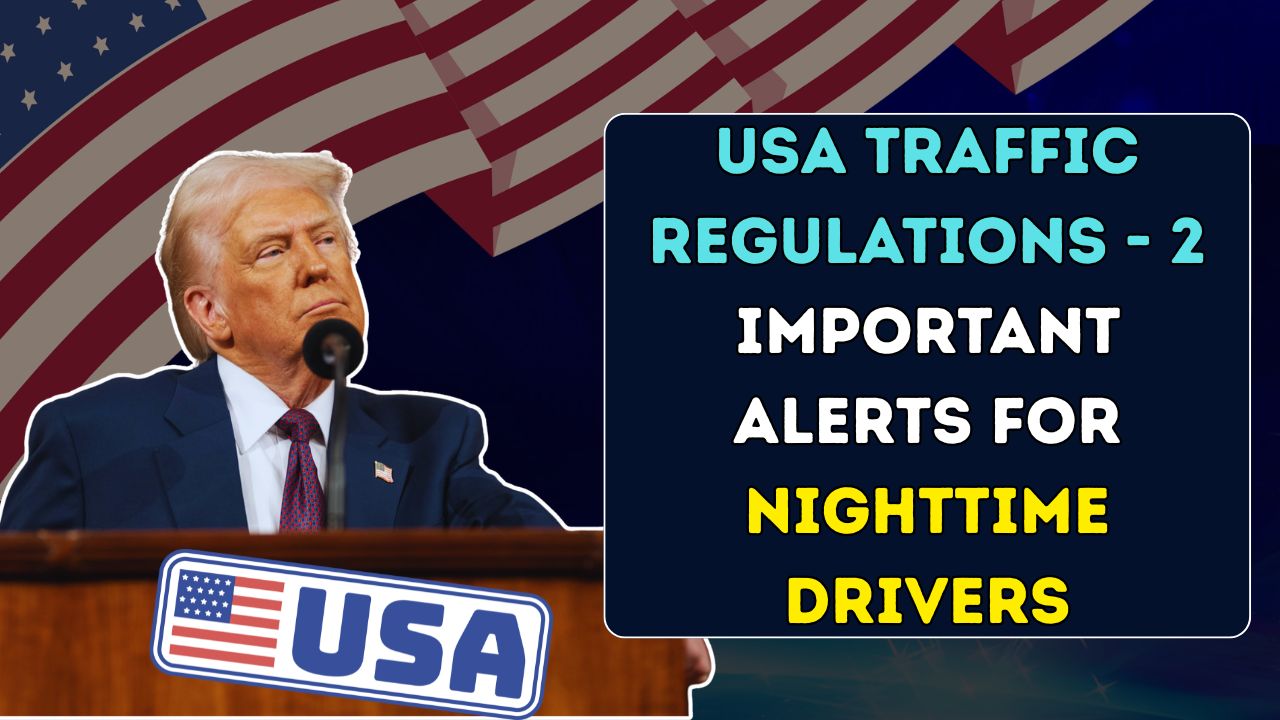Motorists are required to use low-beams when the sun sets or visibility is less than 500 feet. Both federal and state laws mandate the use of headlights from dusk until dawn and whenever windshield wipers are in use. Low beams are more polite to other drivers and high beams, as long as they’re used sensibly, broaden your view on empty stretches of road. Also, remember that using high beams 500 feet away from oncoming vehicles or 300 feet when following other vehicles is courteous and legally required.

Driving Under the Influence: No Tolerance Policy: During Night Time
Driving laws, especially pertaining to alcohol, become more stringent at night. All 50 states have a law that restricts blood alcohol concentration (BAC) to 0.08% for individuals 21 and older. A good number of states have even stricter laws for commercial drivers and people under 21, restricting BAC to 0.04% and 0.02% or less, respectively. Sobriety checkpoints are common on weekends during the standard nightlife rush between 10 PM and 2 AM, often in and around bars and club areas. A single DUI comes with a steep fine, suspended license, and in some cases, even imprisonment. With such severe penalties, abstention seems to always be the best option.
| Regulation | Trigger Conditions | Required Action | Penalty for Non-Compliance |
|---|---|---|---|
| Headlight Use | Sunset to sunrise or <500 ft visibility | Switch to low beams; high beams as needed | Fine up to $200; possible points |
| High-Beam Restrictions | Within 500 ft of oncoming vehicle | Dim to low beams | Fine up to $100; points |
| BAC Limit for Non-Commercial Drivers | Always | <0.08% | License suspension; fines; jail |
| BAC Limit for Commercial Drivers | Always | <0.04% | Fines; CDL disqualification |
| Underage Zero Tolerance | Always | <0.02% or less | License suspension; fines |
Road Hazards: Pay Attention to Pedestrians and Animals
Accidents that happen during the night often involve pedestrians and animals that are out at night. Many places in the U. S. now have flashing warning lights and signs that need to be posted in pedestrian-heavy zones as well as signposted warning zones. Drivers are required to ease their speed in marked crosswalks and during the night in residential areas. Similarly, country roads may have signs warning vehicle drivers about animals crossing the road. Driving into a deer can cause a vehicle over 4,000 dollars in damages and injure the driver or passenger. But, when driving in rural areas, if drivers cut down their speed and are watchful for the tell-tale glow of eyes that reflect light, the chances of avoiding crashes are greatly improved.
Tech-Savvy Safety: Modern Aids and Applications
Apps and modern technology are changing the experience of driving at night. Automotive technology, smartphones and “DriveGuard” can now warn drivers well in advance of DUI and crash zones. Your smartphone can now notify you when you are near DUI and crash zones. While these driving tools cannot enforce traffic laws, they greatly increase adherence to the law and the ease of driving.
Navigating driving in USA at night doesn’t have to be stressful. Sticking to headlight rules as well as the modern safety features, observing strict DUI limits, and modern technology placed in vehicles, makes driving safer for everyone.
Driving in the dark, as the night progresses, certainly demands extreme care, road safety, and technology that can be depended on now, during the day. Your vehicle’s features and modern aids can help a driver reduce risks for themselves and others.